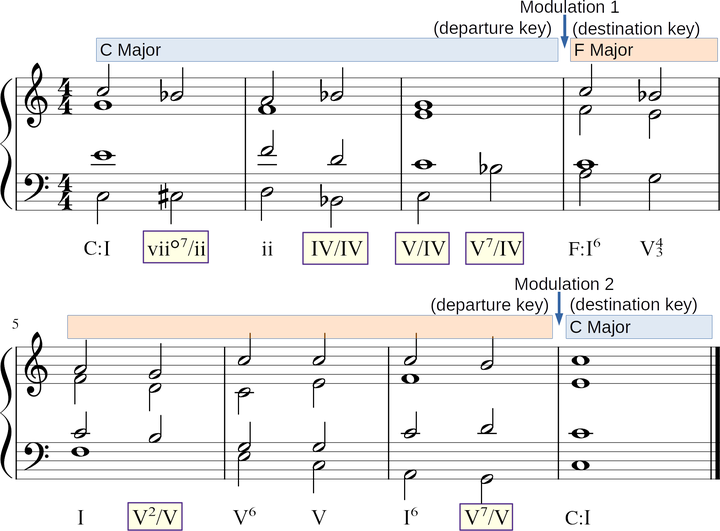 Excerpt from the dataset. Extracted from the Practical Manual of Harmony by Rimsky-Korsakov.
Excerpt from the dataset. Extracted from the Practical Manual of Harmony by Rimsky-Korsakov.Abstract
Throughout the common-practice period (1650–1900), it is customary to find changes of musical key within a piece of music. In current music theory terminology, the concepts of modulation and tonicization are helpful to explain many of these changes of key. Conversely, in computational musicology and music information retrieval, the preferred way to denote changes of key are local key features, which are oftentimes predicted by computational models. Therefore, the three concepts, local keys, modulations, and tonicizations describe changes of key. What is, however, the relationship between the local keys, modulations, and tonicizations of the same musical fragment? In this paper, we contribute to this research question by 1) reviewing the current methods of local-key estimation, 2) providing a new dataset with annotated modulations and tonicizations, and 3) applying all the annotations (i.e., local keys, modulations, and tonicizations) in an experiment that connects the three concepts together. In our experiment, instead of assuming the music-theoretical meaning of the local keys predicted by an algorithm, we evaluate whether these coincide better with the modulation or tonicization annotations of the same musical fragment. Three existing models of symbolic local-key estimation, together with the annotated modulations and tonicizations of five music theory textbooks are considered during our evaluation. We provide the methodology of our experiment and our dataset (available at https://github.com/DDMAL/key_modulation_dataset) to motivate future research in the relationship between local keys, modulations, and tonicizations.